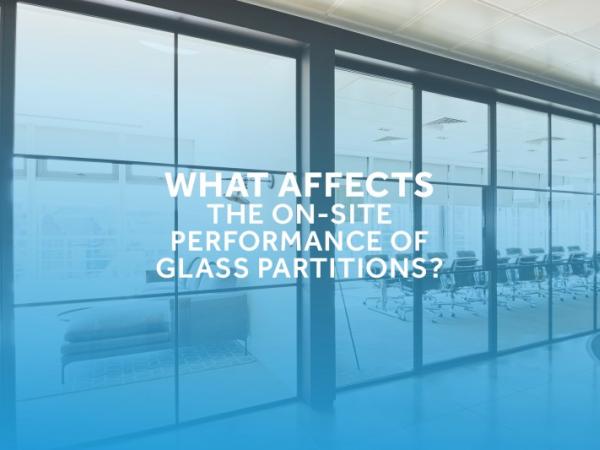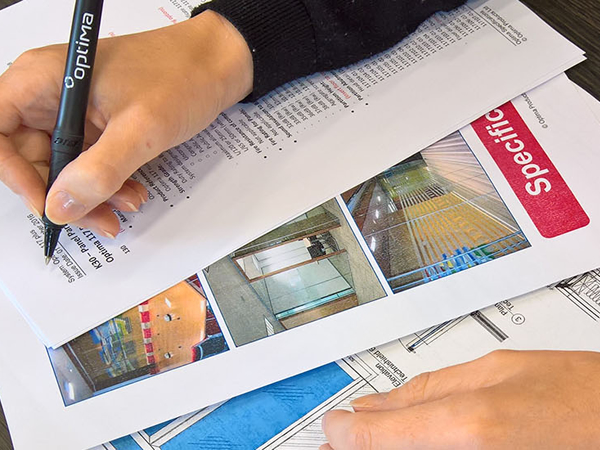Will the on-site performance of a partition to be the same as within the laboratory?
The simple answer is no. When partitions and/or doors are installed on-site, their performance may be affected by a number of factors.
Whilst the installation may have been carried out as closely as possible to the standard and quality of that in the laboratory test, it is unreasonable to expect the on-site performance to be the same as the laboratory test performance.
So why is this? There are a number of components in a finished fit-out that can cause the apparent performance of a partition to be poorer than the specified value.
This is known as Flanking Transmission and can occur through the ceiling plenum, the floor plenum, the curtain wall mullions, the abutments, around the partition via penetrations and around the door leaf.
Even with a good quality installation, and reasonable care paid to controlling such flanking sound transmission, it’s not uncommon for the on-site Dw acoustic performance to be up to 8dB below the equivalent laboratory tested Rw value.
What Can Be Done to Try and Control Flanking Sound Transmission?
There are several ways in which flanking sound transmission can be dealt with in order to maximise acoustic effectiveness.
Flanking Through the Ceiling Plenum
Solution: A barrier should be installed in the ceiling void that is capable of making up the difference in sound performance between the ceiling and the partition.
For example, if the ceiling offers 30dB room to room sound insulation and the glazed partition offers 38dB room to room sound insulation, there is a deficit of 8dB. The void therefore needs to have a barrier capable of making up the difference.
Flanking Through the Floor Plenum
Solution: A typical raised access floor offers 40dB room to room sound insulation. A single glazed partition would typically give less than that, so no further treatment should be necessary.
However, with a double glazed, higher performing screen, a void barrier would be necessary.
Flanking Through the Curtain Wall Mullion
Solution: Curtain wall mullions are typically very poor sound insulators as they are simply thin-walled hollow boxes. These are sometimes filled with aggregate to deaden them but this is not common.
Mullions should be masked with an effective dampener. This could be plasterboard or high-density acoustic foam with a decorated casing to match the mullion.
Flanking Through the Abutment
Solution: Fixing of partition tracks needs to be a key part of the acoustic strategy. Optima’s abutment tracks are supplied with foam tape to form an effective seal and close up the air path. Where the wall surface is uneven, acoustic sealant may also be required.
Sound Passing Around the Partition Via Penetrations - Air Conditioning Ducts
Solution: Crosstalk attenuators should be fitted in the ceiling void barrier.
Unsealed Penetrations
Solution: The hole should be fully sealed with a medium of equivalent sound insulation quality.
Flanking Through Doors
There is an understanding that fitted doors will not perform to the level of a laboratory test as there are too many variables, but attention to detail is critical, particularly through the door frame seals, in order to maximise the acoustic potential.
In summary, a number of factors can affect the apparent acoustic performance of a partition on site, and it is therefore unrealistic to assume that an on-site test result will be the same as for a laboratory test.
How does Optima ensure that the best acoustic performance possible is achieved on-site?
Optima is highly focussed on the need to get the acoustic performance right first time. To this end our site teams are trained to look out for the potential pitfalls we’ve looked at in this blog.
Nobody wants to have to revisit an acoustic weakness when the job is finished, so our Project Managers encourage a coordinated approach ensuring all parties are engaged throughout the construction process.








